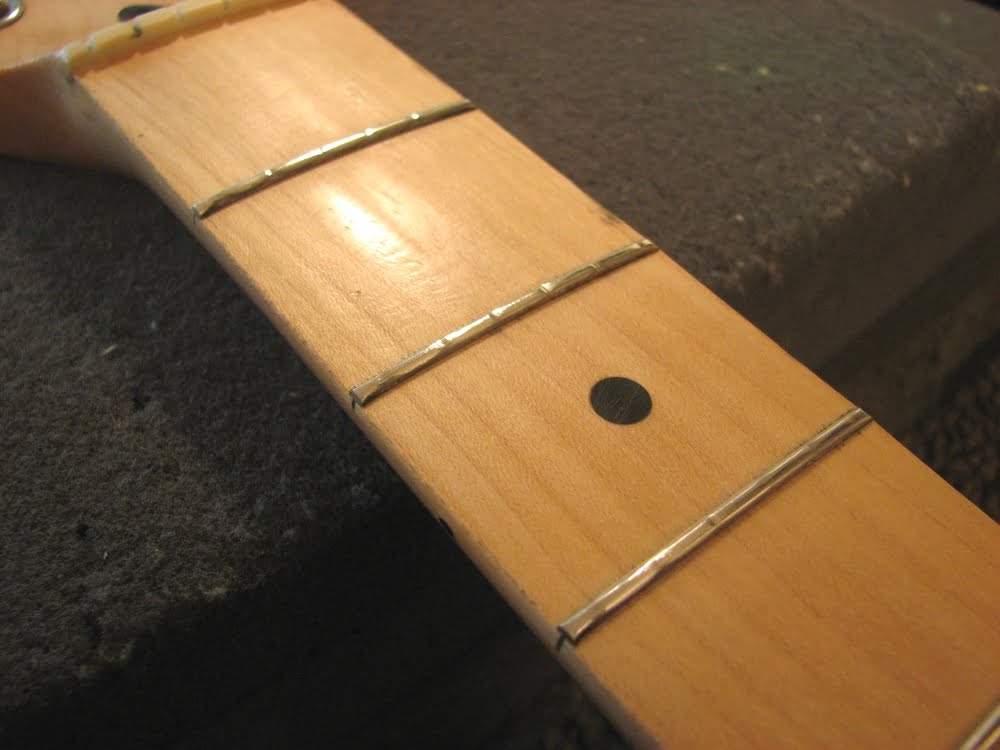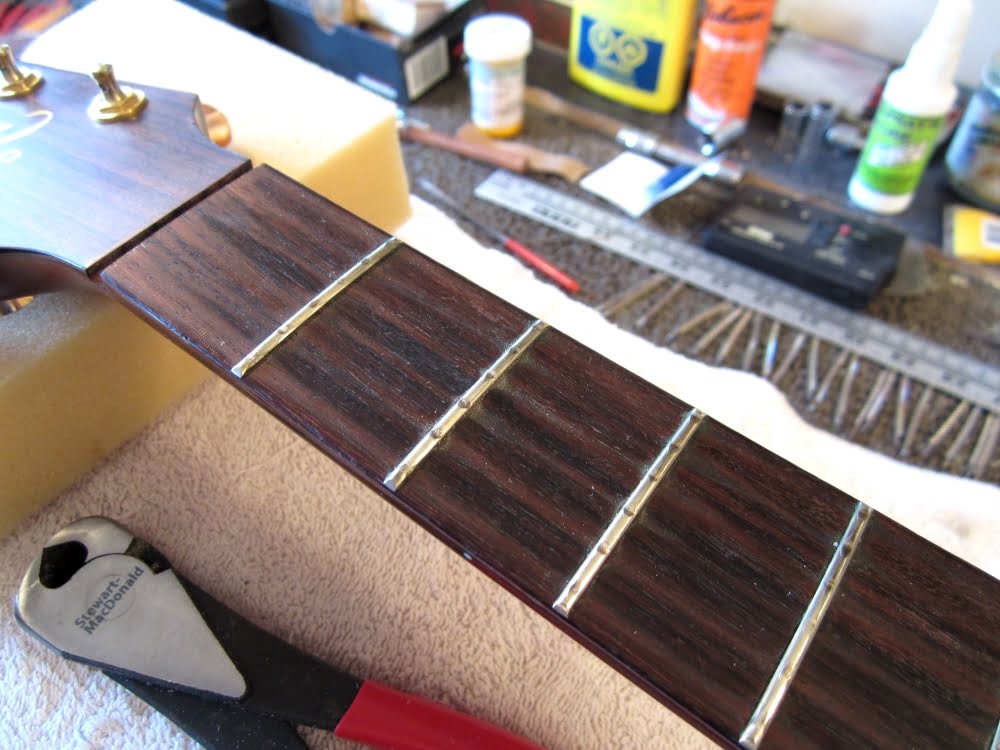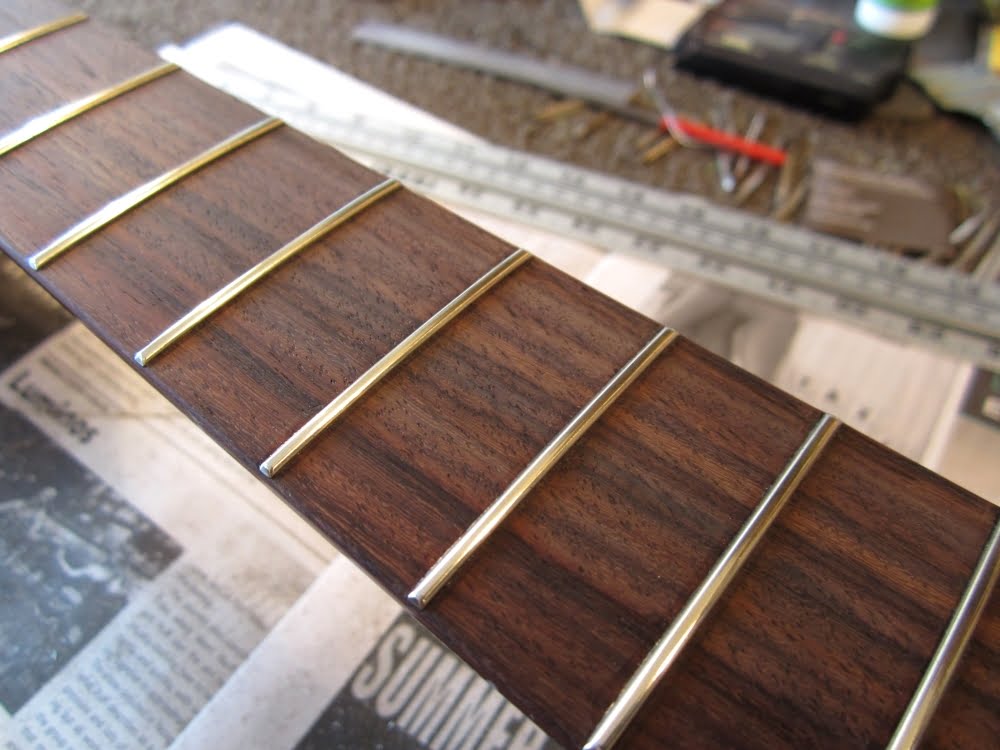These frets have big, deep divots from many hours of playing all over the neck. Fret wear like this can produce fret buzz as well as poor tone and intonation. Frets eventually wear out, and that’s when it’s time for some fretwork!
One way to extend the life of your frets is to clean your strings regularly. You don’t necessarily need any fancy bottled string cleaner; a cloth does the trick when used immediately after playing. Another approach, if the strings have accumulated some grime, is to clean them with ultra-fine steel wool. This will clear any crud build-up fast, albeit a tad messy. When using steel wool, pinch the string with it while moving up and down the string. Be sure to get the underside, as all that oxidized crud builds up there. Remember to tape up the pickups really well with low-tack masking tape and brush it all away before removing the tape, or you’ll be swearing at me for weeks.
This guitar pictured below won’t get away with a fret level; there’s just not enough fret material left to work with. The worn divots have become too deep. A typical fret level (a.k.a. fret dressing) consists of taking a file to the tops of the frets to minimize or eliminate the inconsistencies. The divots are filed out, recrowned (tops rounded), and polished. Any worse then some mild fret wear, like pictured, than a refret may be in order. A refret consists of some or all of the frets being removed and replaced with new ones. Sounds easy enough, but it is a fairly big job, and each guitar has its own challenges to work with. Our Fretworks class is definitely the most challenging, but also the most rewarding.
Once the frets are uniformly level, they are then recrowned (rounded), and polished. In the polishing stage, all the scratches from the filing process are removed, and they look like new frets (ah, the magic of polishing). The guitar is then restrung and setup according to the new fret height.
Learn all about fretwork in our articles, classes, and books. If you have any questions, post them below!








